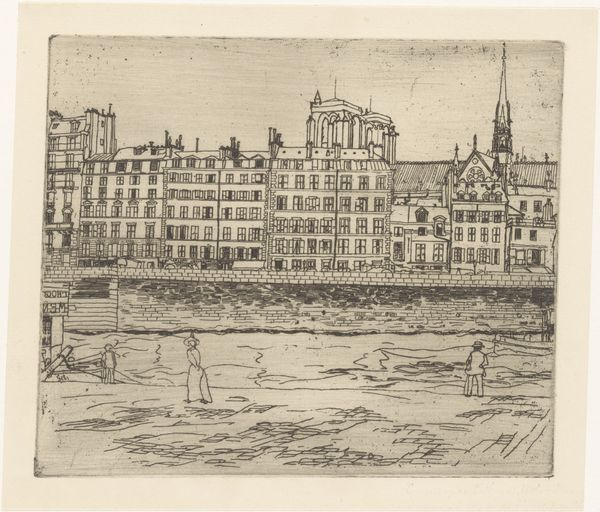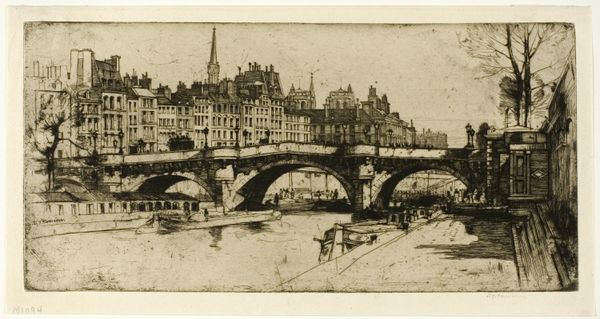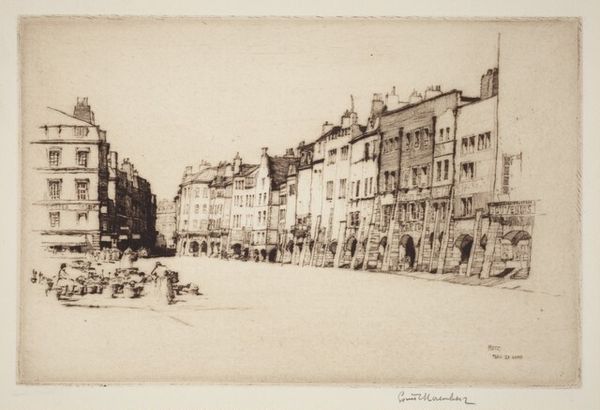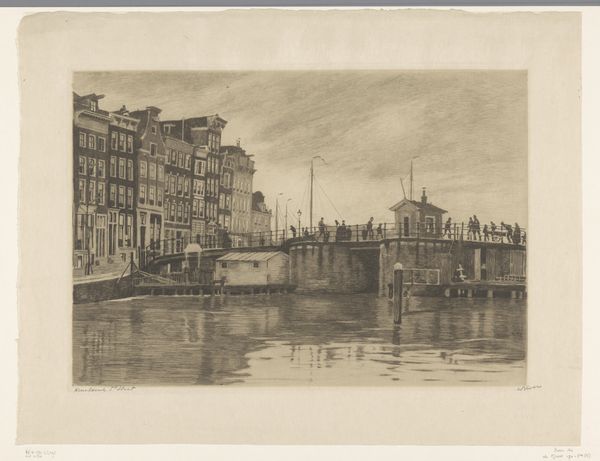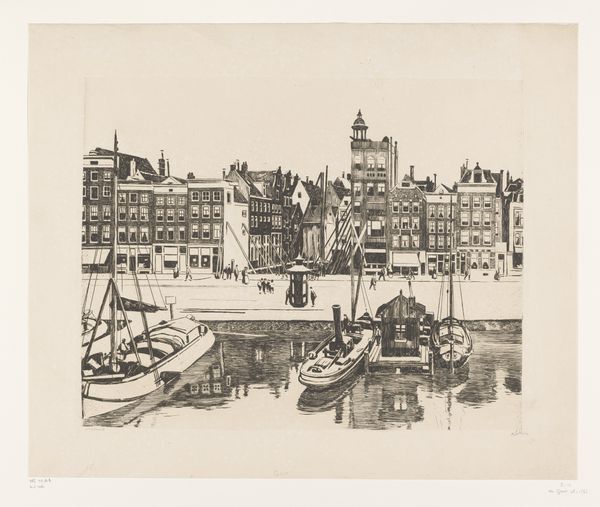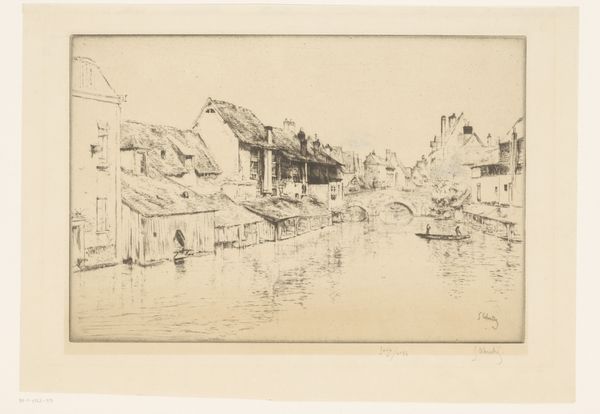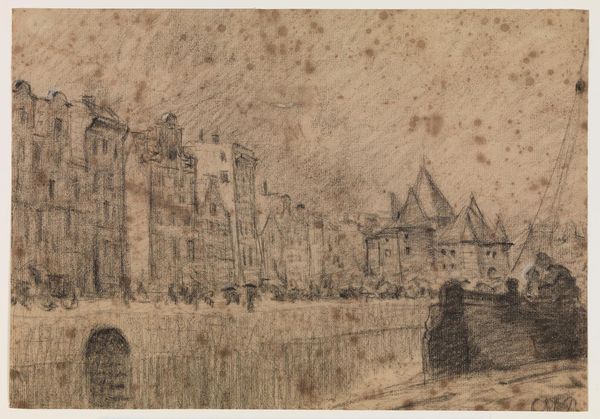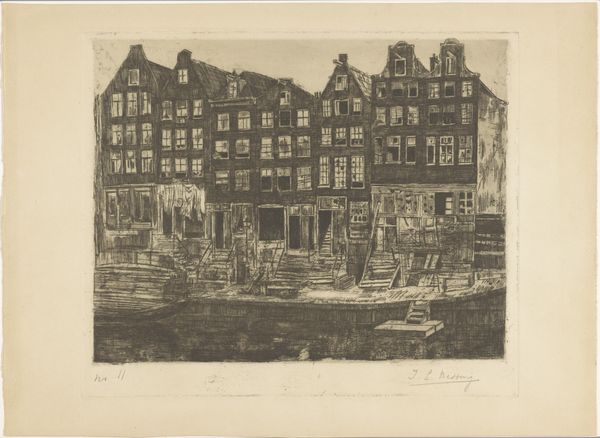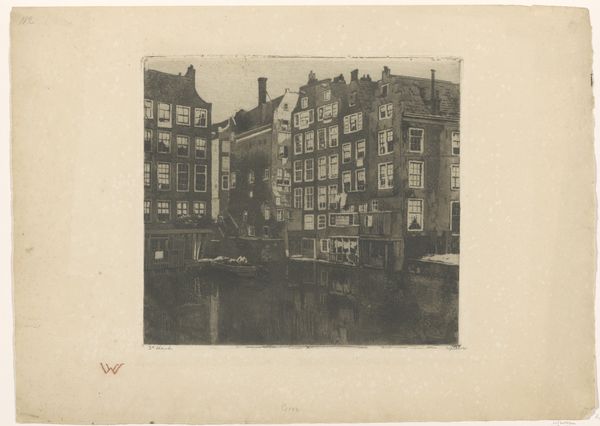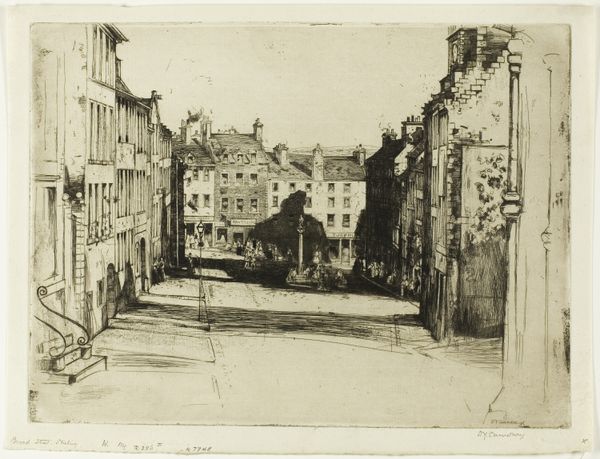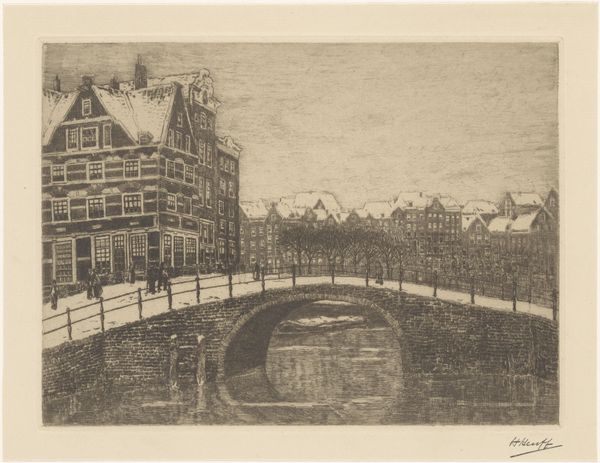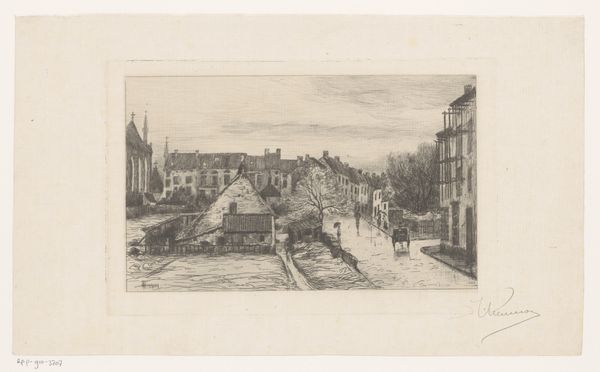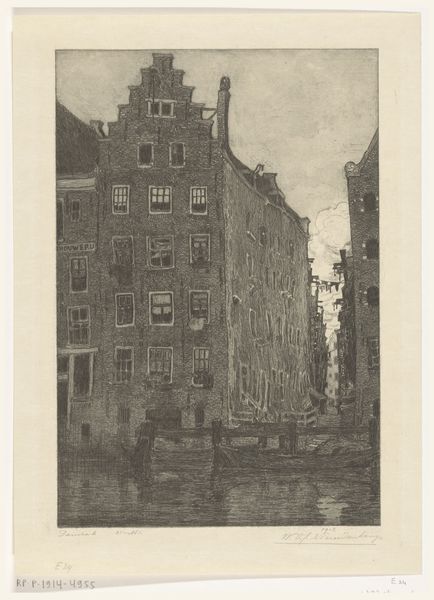
drawing, print, etching, paper
#
drawing
# print
#
etching
#
landscape
#
paper
#
cityscape
Dimensions: 200 × 355 mm (image/plate); 262 × 420 mm (sheet)
Copyright: Public Domain
Curator: David Young Cameron's "Dinant, plate nine from the Belgian Set," created in 1907, depicts a serene cityscape through the medium of etching on paper. It's currently held in the collection of the Art Institute of Chicago. Editor: There's a melancholy beauty to this print, don't you think? It feels as though the artist captured not just the buildings, but a very specific atmosphere. Curator: Absolutely. Dinant, situated along the Meuse River, held strategic importance, and this visual portrayal can be seen through a lens of power, class structures, and even military history reflected in urban design. What seems at first glance to be an unassuming cityscape resonates with complex social dynamics when considering it within that specific context. Editor: Looking closer at the technical aspects of this etching, it's fascinating to observe the lines Cameron employed and what they reveal about labor, specifically the amount of time the etching would've required and its position as a luxury product. The variation in line weight gives the buildings such palpable presence, creating areas of dark shadow to amplify the depth, don't you agree? It appears the architecture almost swells up. Curator: I agree about Cameron's line use being powerful, and his detailed representation invites discussion of class distinctions evident during the period it was created in; how some enjoyed architectural achievements through capitalism while others had little. These socioeconomic differences shape and give definition to spaces and their availability. The material choices, too, represent the society's norms on class, labor and capital. Editor: It's true that it gives you something to ponder on what resources would've been required, not to mention what the cost would be to procure quality paper suitable for an etching. And I feel Cameron wants the viewer to focus on materiality here too. I see such a consciousness in representing the cityscape so, not as something separate from, but created and formed by human effort. Curator: His representation prompts important conversation surrounding the intersection of art with larger sociopolitical frameworks which is fascinating because Dinant has continued throughout its existence navigating social changes shaped even further by its geographical and social positioning. Editor: It's incredible how examining a seemingly simple etching can open up such rich perspectives on our human-influenced material world.
Comments
No comments
Be the first to comment and join the conversation on the ultimate creative platform.
